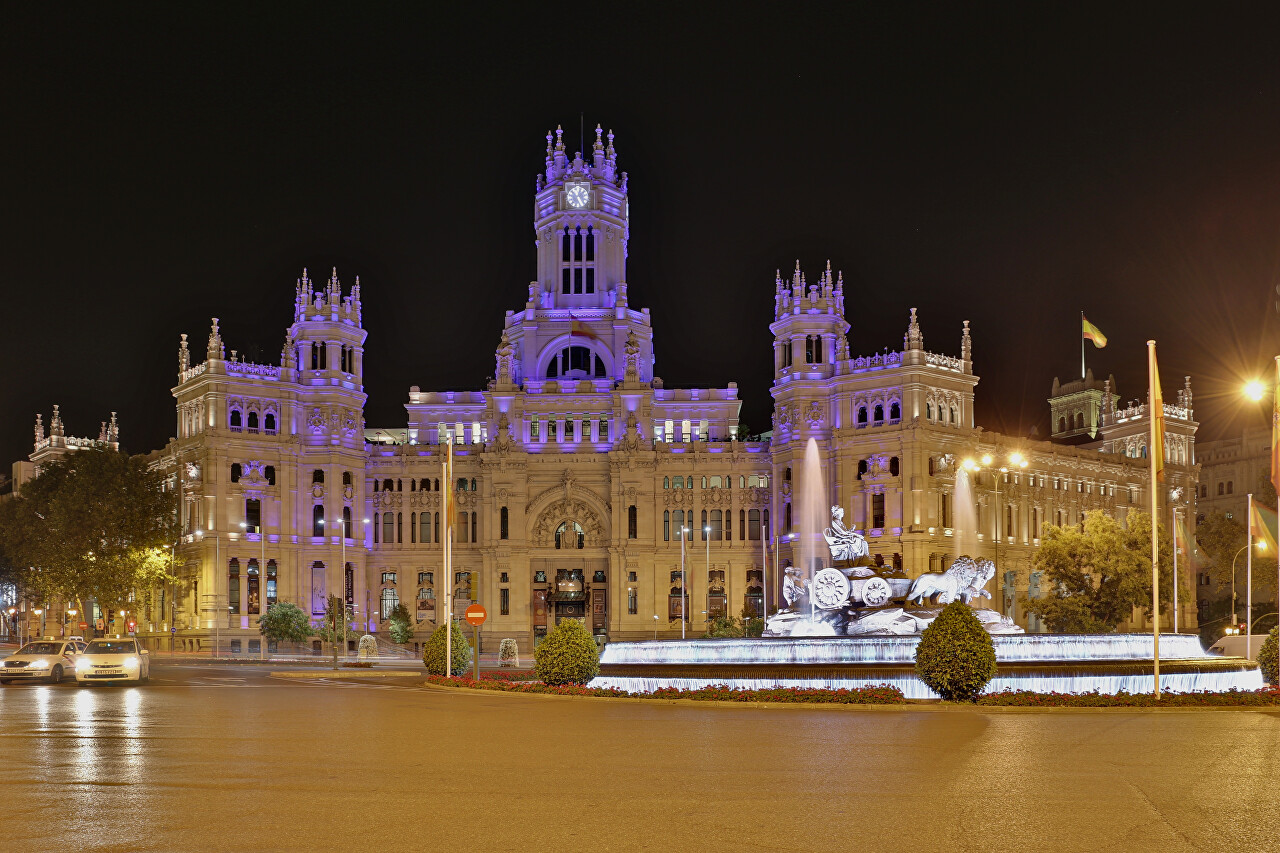Palacio de Comunicaciones, Madrid
Plaza Cibeles is one of the most beautiful squares in the world and a symbol of Madrid, owes much of its memorable appearance to this magnificent building. On August 19, 1904, Parliament decided to build a central office for the postal, telephone and telegraph service. The winners of the architectural competition were young architects Antonio Palacios Ramillo and Joaquín Otamendi in collaboration with engineer Angel Sainz Chueca, who designed the load-bearing metal structures of the building. This was one of the first attempts to create a public building in the Modernismo style in Spain. The project was approved in 1905, and on September 12, 1907, construction began, popularly known as Nuestra Senhora de las Communicaciens (the Holy Virgin of Communication)
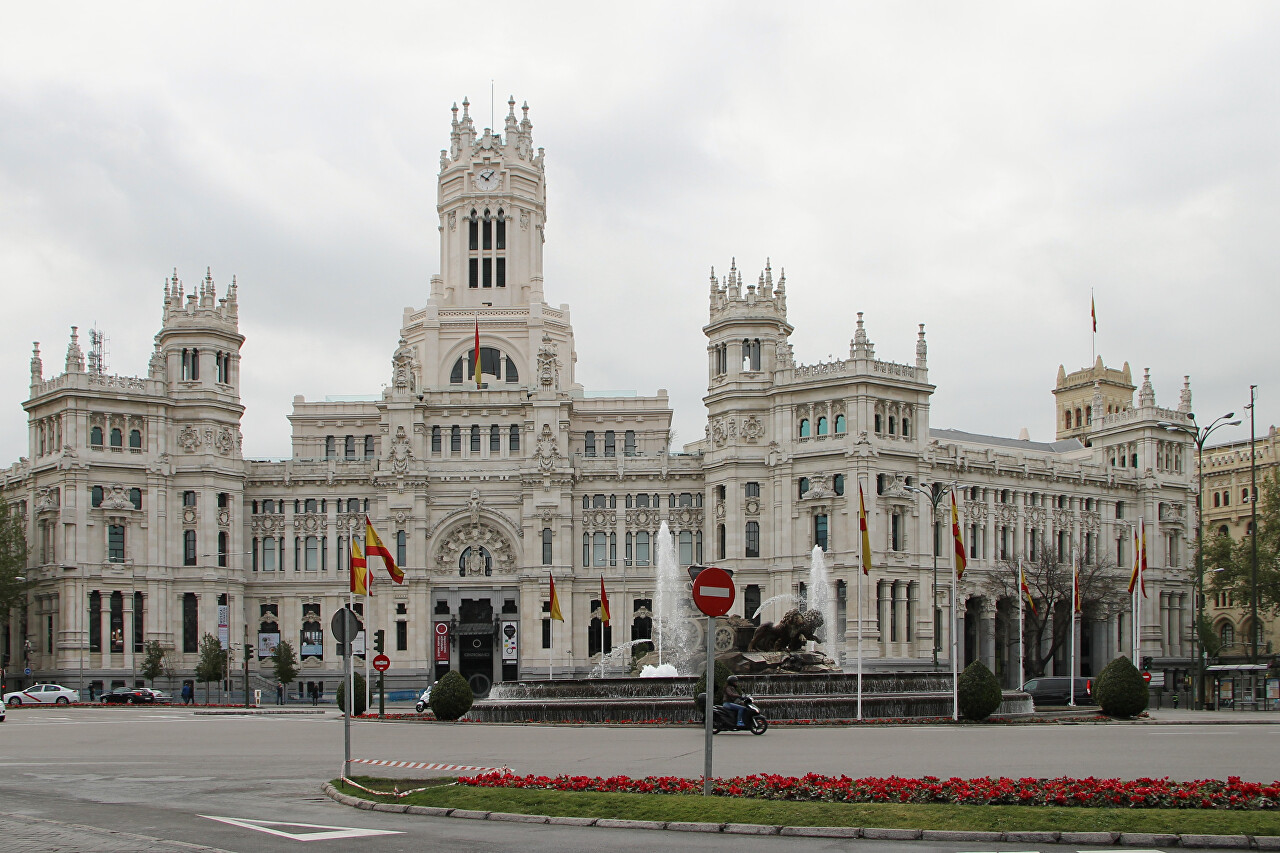
7 thousand cubic meters of stone and bricks, about 2 thousand tons of metal structures were used for construction. The total area of the premises was more than 30 thousand square meters. The mission was equipped with the latest ventilation and heating systems using low-pressure steam. By 1916, the building was ready and the facade and interior decoration began. In the same year, the savings bank and post offices began operating in the building. The grand opening of the Palace of Communications took place at noon on March 14, 1919 in the presence of the royal couple - Alfonso XIII and his wife Victoria Eugenia. 12 years have passed since the start of construction and the initial estimate was exceeded three times, but the Palace has become a subject of national pride, an architectural masterpiece and a symbol of progress. A year later, the building became the headquarters of the Universal Postal Union.
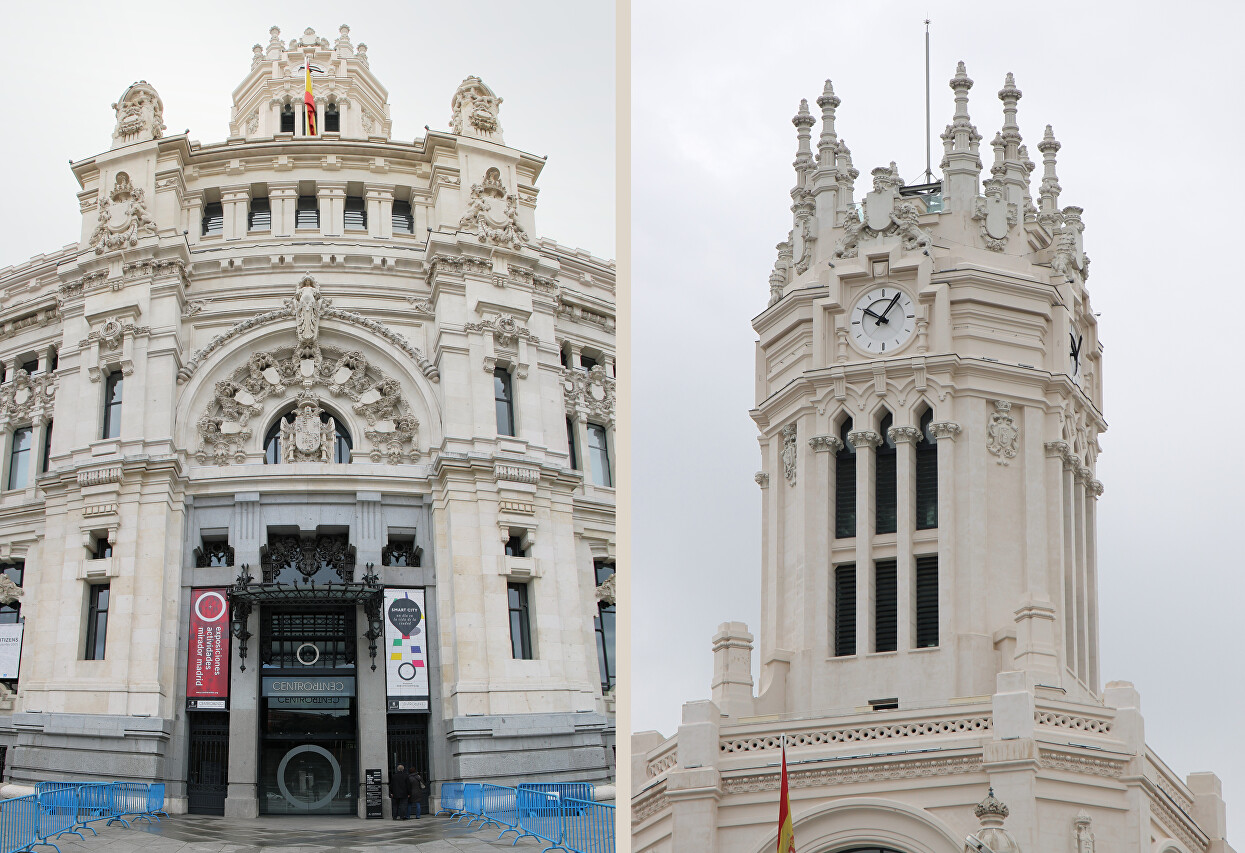
The facade of the building is lined with limestone quarried in the Alicante area, which has a pure white color. The facade was designed by a group of artists and artisans under the direction of sculptor Angel García. Among them were the famous ceramists Daniel Zuloaga and Manuel Ramos Rejano. The facade is decorated with elements of Viennese and American architecture from the beginning of the century, which is interwoven with Masonic symbols. The interiors of the building are a "total work of art" (the authors used the German term "Gesamtkunstwerk"), in which every detail, starting with the lamps on the tables of operators and ventilation holes, is a single artistic complex, while maintaining full functionality.
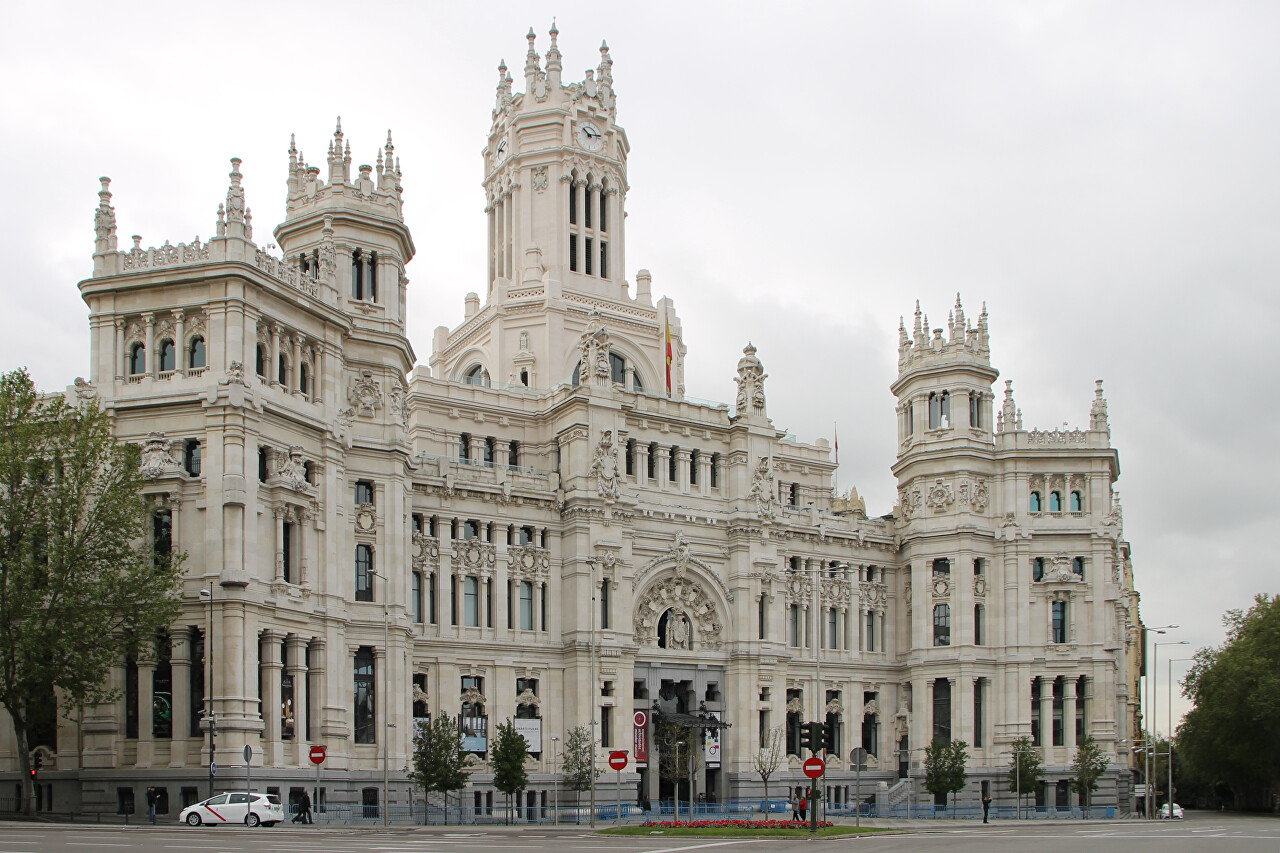
In 1927, the building was expanded, receiving another facade facing Alcala Avenue. On April 14, 1931, the Palace of Communications became the first building to raise the flag of the Second Republic. In the same year, the rear part of the Palace grew by another 2 floors, and the interior was completely renovated. During the Civil War, the building was damaged by air raids, in early March 1939, during the fighting in the city, the Palace received several holes from artillery shells. Bullet holes can still be seen on the white facade of the building.
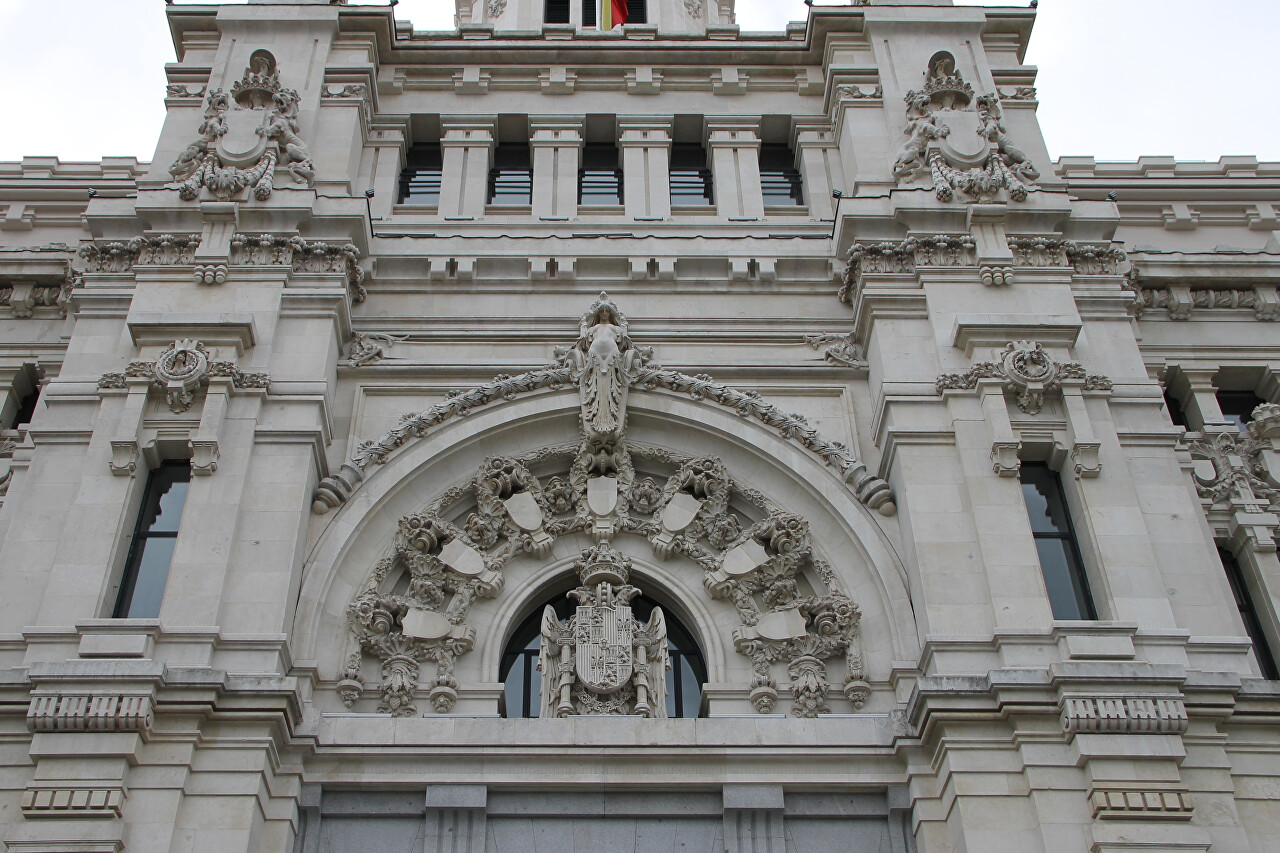
Until 1987, the communications center continued to develop, but with the growth of the city, the national postal service opened more and more offices. This, as well as the rapid development of the Internet, led to the fact that at the beginning of the new millennium, a huge complex served only about half a thousand regular customers.
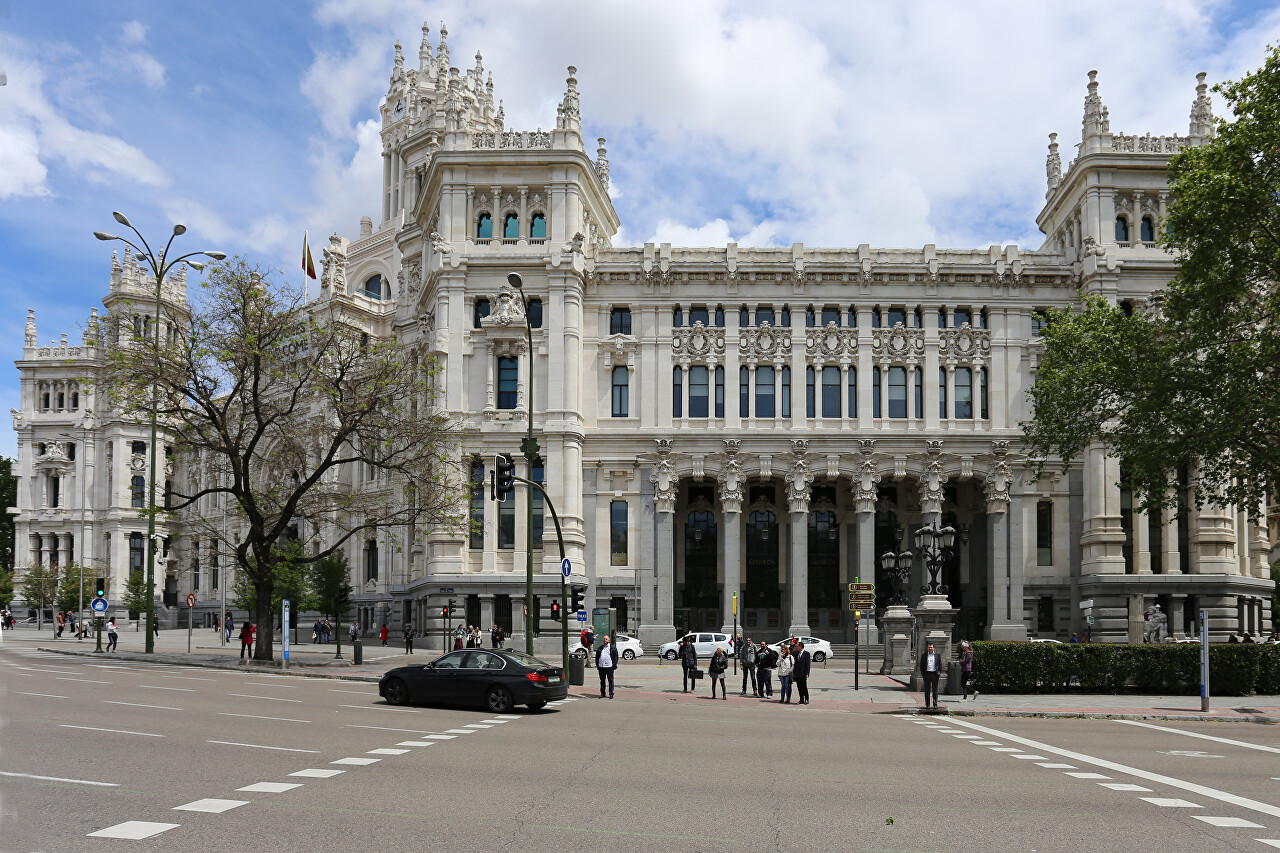
In 2005, part of the premises was given to the city administration services, in 2007 the building was completely transferred to the disposal of the city authorities,becoming the residence of the Mayor of Madrid and receiving a new name - the Cybele Palace.
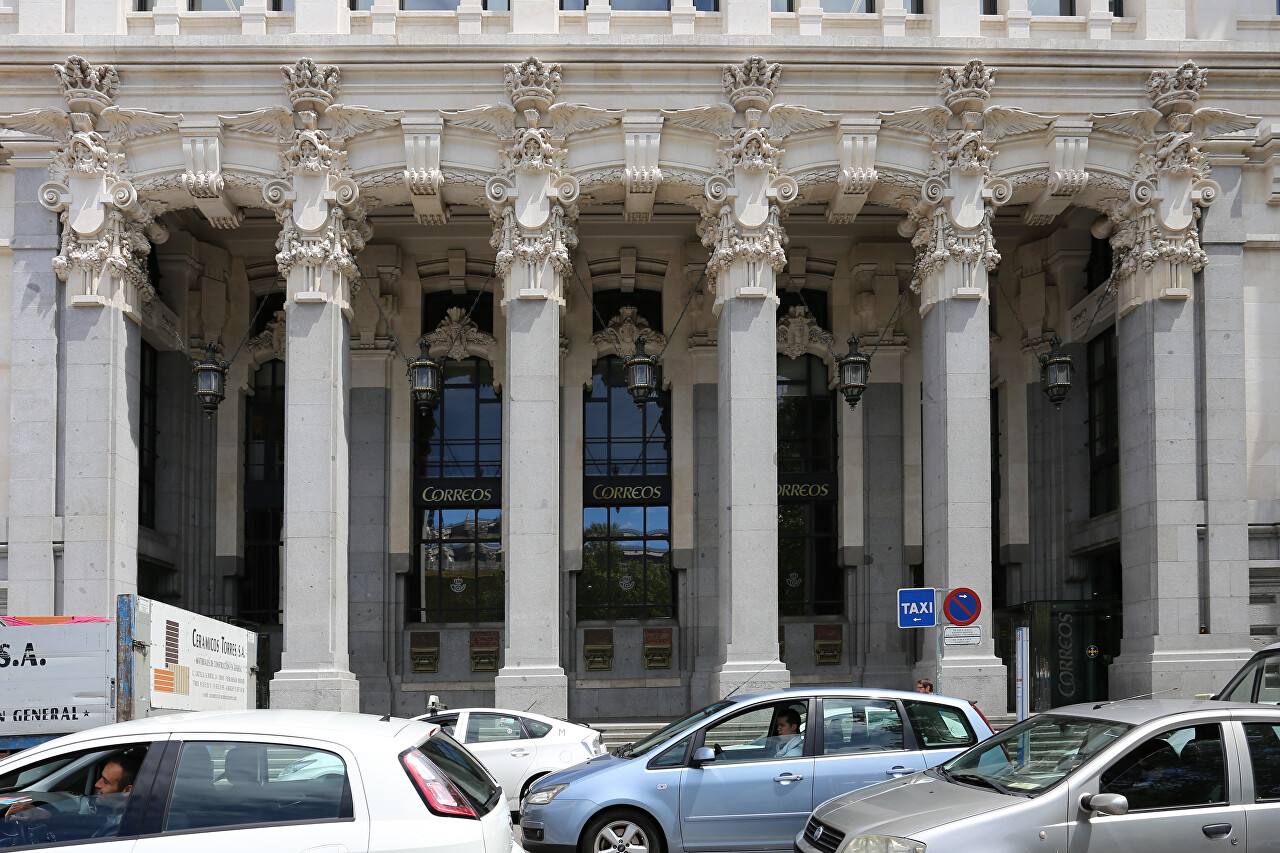
Until 2011, the building was renovated, after which it was opened to the public. Now you can visit the observation deck on the central tower, however, this is not the best point for viewing the city, its height is just over 20 meters. In addition, large areas of the building are reserved for exhibitions.
